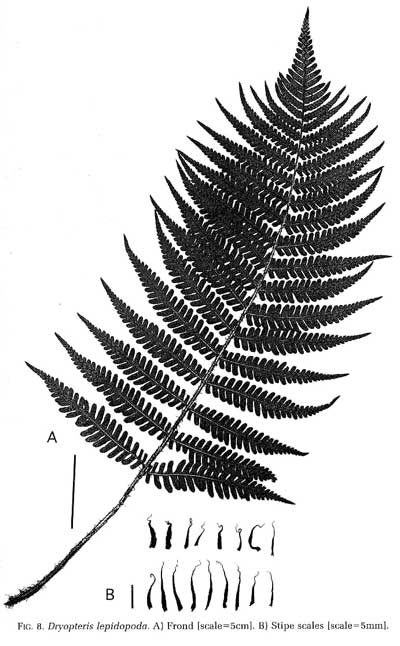| Dryopteris lepidopoda | ||
Sunset fern | ||
|
Etymology
Greek: lepis, scale + pous, foot
Description
Rhizome: erect, scaly.
Frond: 60 cm high by 20 cm wide, deciduous or persistent, monomorphic, blade/stipe ratio: 2:1. Stipe: grooved, scales narrow long-triangular, brownish to black, margins ciliate, vascular bundles: 3-7 in a c-shaped pattern. Blade: 2-pinnate near the rachis at the base, less outwards and upwards, oblong-triangular, as wide at the base as the middle, slightly lustrous, stipe scales continue on rachis; sparse, star-shaped scales on the upper surface are deciduous. Pinnae: 20 to 25 pair, opposite, often slightly curving upward; pinnules oblong; costae grooved above, continuous from rachis to costae; margins apex rounded with small, acute teeth; veins free, forked. Sori: round, on the upper two-thirds of the blade, indusium: reniform, thick, persistent, at a sinus, sporangia: brown. Culture
Habitat: mountain forests at 1200-1550 m.
Distribution: China, Tibet, Bhutan, Nepal, India, Taiwan.
Hardy to -25�C, USDA Zone 5.
Distinctive Characteristics
blade as wide at the base as the middle, black scales, rounded pinnules sharply toothed at the apex
Synonyms
Dryopteris nigra Ching Christella khasiana L�v. Nephrodium parallelogrammum f. khasiana (Clarke) Hope Dryopteris taiwanicola Tagawa |
|
|
